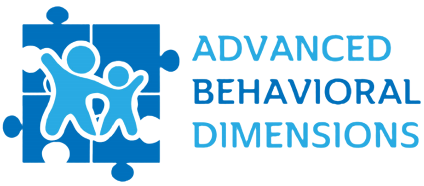The Role of Family in Early Autism Intervention: Empowering Parents and Siblings
Imagine navigating a complex maze with your child, where every turn represents a unique challenge in understanding and supporting their developmental journey. For families facing autism, this journey begins with early intervention—a critical path that transforms challenges into opportunities for growth and connection.
Table of Contents
| Understanding Autism and Early Intervention |
| The Emotional Landscape of Autism Diagnosis |
| Family as the Primary Support System |
| Communication Strategies for Family Members |
| Creating a Supportive Home Environment |
| Sibling Involvement and Empowerment |
| Professional Collaboration and Family Teamwork |
| Therapeutic Approaches at Home |
| Managing Stress and Maintaining Family Wellness |
| Celebrating Progress and Individual Strengths |
Understanding Autism and Early Intervention
Autism Spectrum Disorder (ASD) is a neurodevelopmental condition characterized by challenges in social interaction, communication, and repetitive behaviors. Early intervention is not just a medical approach—it’s a family mission that can significantly improve outcomes for children with autism.
Key Components of Early Intervention
- Comprehensive developmental assessment
- Personalized intervention strategies
- Family-centered support systems
- Continuous learning and adaptation
The Emotional Landscape of Autism Diagnosis
Receiving an autism diagnosis can feel like an emotional earthquake. Parents often experience a complex mix of emotions: shock, grief, confusion, and ultimately, determination. Accepting the diagnosis is the first step towards empowerment.
Family as the Primary Support System
Families are the most consistent and influential support network for children with autism. Your love, understanding, and commitment can create transformative environments that nurture development and build confidence.
Strategies for Family Support
- Active listening
- Unconditional acceptance
- Patience and flexibility
- Continuous education
Communication Strategies for Family Members
Effective communication goes beyond words. For children and individuals diagnosed with autism, understanding subtle cues, emotions, and alternative communication methods is crucial.
Communication Techniques:
- Visual communication aids
- Simplified language
- Consistent routines
- Nonvocal communication awareness
Creating a Supportive Home Environment
Your home should be a safe, predictable, and nurturing space. Structured environments with clear expectations can help children with autism feel secure and confident.
Home Environment Considerations:
- Sensory-friendly spaces
- Consistent daily routines
- Visual schedules
- Calm, organized living areas
Sibling Involvement and Empowerment
Siblings play a unique and powerful role in a child’s autism journey. They can be extraordinary allies, advocates, and sources of support.
Sibling Support Strategies
- Age-appropriate education about autism
- Inclusive activities
- Emotional support and validation
- Celebrating individual strengths
Professional Collaboration and Family Teamwork
Success in early autism intervention requires seamless collaboration between families and professionals. Think of it as a well-choreographed dance, where each participant brings unique skills and perspectives.
Collaborative Approaches:
- Regular communication with therapists
- Consistent implementation of strategies
- Shared goal-setting
- Mutual respect and learning
ABA Approaches at Home
While professional ABA therapy is crucial, the real magic happens in daily interactions. Families can integrate therapeutic approaches into everyday activities.
Home-Based Therapeutic Strategies:
- Play-based learning (Natural Environment Teaching)
- Positive reinforcement
- Skill generalization
- Sensory integration activities
Managing Stress and Maintaining Family Wellness
The autism journey can be emotionally and physically demanding. Self-care is not selfish—it’s essential.
Stress Management Techniques:
- Support groups
- Individual counseling
- Respite care
- Shared responsibilities
Celebrating Progress and Individual Strengths
Every milestone, no matter how small, is a victory. Celebrate unique abilities, progress, and the extraordinary journey of your child.

Conclusion
Early autism intervention is a collaborative, loving process that transforms challenges into opportunities. Your family’s support, understanding, and commitment can create a world of possibility for your child.
Frequently Asked Questions
- What are the early signs of autism? Delayed speech, limited eye contact, repetitive behaviors, and challenges in social interaction.
- How early can autism be diagnosed? Some signs can be detected as early as 18 months, with comprehensive diagnosis typically around 2-3 years.
- Can early intervention really make a difference? Yes, early intervention can significantly improve communication, social skills, and overall developmental outcomes.
- How can siblings help in autism intervention? By being patient, understanding, participating in activities, and serving as supportive companions.
What resources are available for families? Local support groups, online communities, professional counseling, and specialized autism support organizations.





